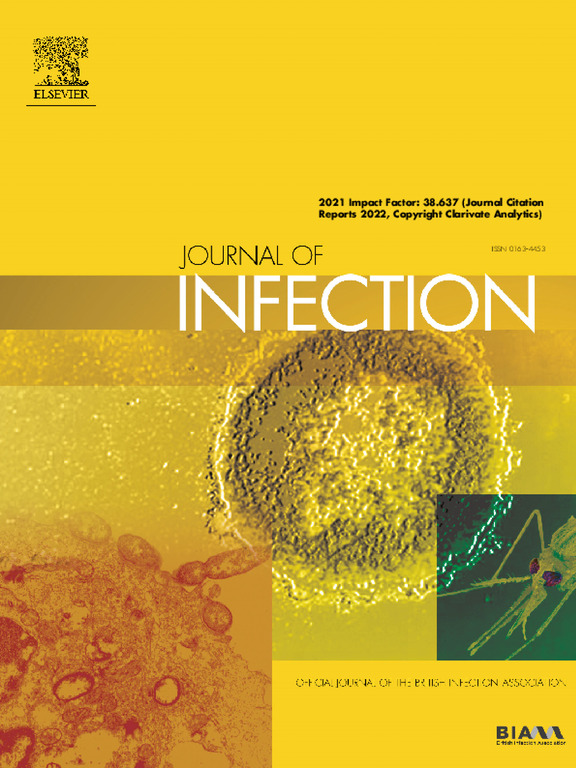Dental plaque disclosing gel: An effective detecting agent for guiding debridement of bacterial biofilms in periprosthetic joint infection
IF 11.9
1区 医学
Q1 INFECTIOUS DISEASES
引用次数: 0
Abstract
Objectives
The presence and invisibility of biofilms are critical factors contributing to incomplete debridement in periprosthetic joint infection (PJI), often leading to infection relapse and failure of debridement, antibiotics, and implant retention (DAIR) procedures or subsequent revision surgeries. GC Tri Plaque ID Gel™ (GC gel), a three-tone disclosing gel, is widely used in dentistry to assess plaque presence, maturation and acidity by different colors. However, its potential in PJI remains unvalidated. This study aimed to assess GC gel’s feasibility in visualizing implant surface biofilm, distinguishing maturity and guiding DAIR procedures.
Methods
Murine subcutaneous biofilm infection models with fluorescence-labeled Methicillin-resistant Staphylococcus aureus (MRSA) and Escherichia coli (E. coli) were used to simulate biofilm formation. Infected implants collected at different time points were observed under fluorescence microscopy, followed by GC gel staining. Staining accuracy, sensitivity, the Dice and the Jaccard scores were calculated by comparing fluorescence and stained images. Bacterial load and inflammatory responses were evaluated via bacterial counting and routine blood tests. A murine PJI model was used to assess the debridement effectiveness of GC gel-guided DAIR through microbiological, hematological, and histological analysis. Clinical PJI prostheses were stained to evaluate GC gel’s clinical applicability.
Results
GC gel demonstrated over 70% accuracy in visualizing MRSA biofilms, and the sensitivity reached 88.67 ± 4.54%. The Dice and the Jaccard scores were 0.81 ± 0.04 and 0.68 ± 0.06, respectively. Infected implants, including clinical PJI prostheses, exhibited distinct red, blue, and purple staining, indicating biofilm maturity and stage. In contrast, sterile implants and non-infected clinical prostheses could not be stained. With prolonged infection, bacterial load and systemic inflammation increased, reflected by changes in staining intensity and area. GC gel-guided DAIR resulted in lower bacterial load and inflammation in the animal model. Staining of clinical prostheses showed biofilm aggregation in static regions of the joint cavity, with low density on the articulating surface.
Conclusions
GC gel can effectively visualize biofilms and assesses biofilm maturity, revealing biofilm distribution patterns on prosthetic surfaces. GC gel-guided DAIR exhibited superior debridement outcome in animal model, supporting its potential in further PJI treatment.
牙菌斑揭露凝胶:引导假体周围关节感染细菌生物膜清创的有效检测剂。
目的:生物膜的存在和不可见性是导致假体周围关节感染(PJI)不完全清创的关键因素,经常导致感染复发和清创、抗生素和种植体保留(DAIR)手术或随后的翻修手术失败。GC Tri Plaque ID Gel™(GC Gel)是一种三色调显示凝胶,广泛用于牙科领域,通过不同颜色来评估牙菌斑的存在、成熟和酸度。然而,其在PJI中的潜力尚未得到证实。本研究旨在评估GC凝胶可视化种植体表面生物膜、区分成熟度和指导DAIR程序的可行性。方法:采用荧光标记耐甲氧西林金黄色葡萄球菌(MRSA)和大肠杆菌(E. coli)的小鼠皮下生物膜感染模型模拟生物膜的形成。在荧光显微镜下观察不同时间点收集的感染种植体,然后进行GC凝胶染色。通过比较荧光图像和染色图像,计算染色的准确性、灵敏度、骰子和Jaccard分数。通过细菌计数和常规血液检查评估细菌负荷和炎症反应。采用小鼠PJI模型,通过微生物学、血液学和组织学分析评估GC凝胶引导DAIR的清创效果。对临床PJI假体进行染色,评价GC凝胶的临床适用性。结果:GC凝胶对MRSA生物膜的显像准确率达70%以上,灵敏度达88.67±4.54%。骰子和Jaccard得分分别为0.81±0.04和0.68±0.06。感染的种植体,包括临床PJI假体,表现出明显的红色、蓝色和紫色染色,表明生物膜的成熟度和阶段。相比之下,无菌种植体和未感染的临床假体不能染色。随着感染时间的延长,细菌负荷和全身性炎症增加,表现为染色强度和面积的变化。气相色谱凝胶引导DAIR导致动物模型中的细菌负荷和炎症降低。临床假体染色显示关节腔静态区生物膜聚集,关节面密度低。结论:气相色谱凝胶可以有效地观察生物膜并评估生物膜的成熟度,揭示生物膜在假体表面的分布规律。GC凝胶引导的DAIR在动物模型中表现出良好的清创效果,支持其在进一步PJI治疗中的潜力。
本文章由计算机程序翻译,如有差异,请以英文原文为准。
求助全文
约1分钟内获得全文
求助全文
来源期刊

Journal of Infection
医学-传染病学
CiteScore
45.90
自引率
3.20%
发文量
475
审稿时长
16 days
期刊介绍:
The Journal of Infection publishes original papers on all aspects of infection - clinical, microbiological and epidemiological. The Journal seeks to bring together knowledge from all specialties involved in infection research and clinical practice, and present the best work in the ever-changing field of infection.
Each issue brings you Editorials that describe current or controversial topics of interest, high quality Reviews to keep you in touch with the latest developments in specific fields of interest, an Epidemiology section reporting studies in the hospital and the general community, and a lively correspondence section.
 求助内容:
求助内容: 应助结果提醒方式:
应助结果提醒方式:


